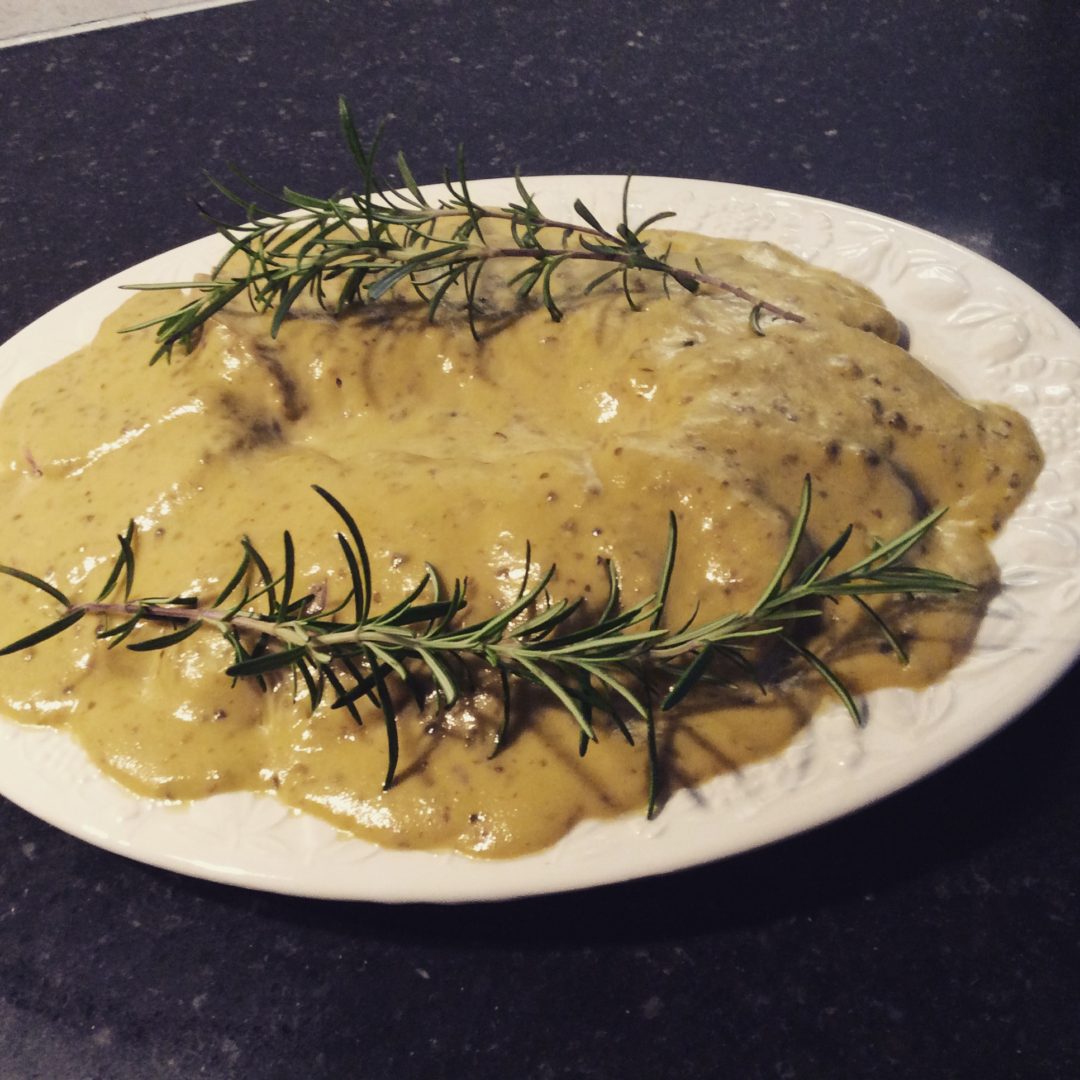I’ll be honest and say that when I first heard about this dish, I wasn’t at all sure that it would be to my taste. Veal and tuna together? Hmm, didn’t sound my kind of combination. If I had not tried it, however, I would have missed out on one of Piedmont’s true glories. I am also very glad that I waited until I was actually in Piedmont to try it. Turin, to be precise and frankly if you can’t find a superb, authentic vitello tonnato there, then something has gone badly wrong with the world. Fortunately, I did find one at the terrific www.leviteletonne.com which pointed me in the right direction when it came to finding an authentic recipe and tweaking it to our taste, and on advice from our Piedmontese friends.
It is true to say that there is still some reluctance to eat veal in the UK. Whilst I absolutely would not eat crate reared veal, free range rose veal is one of life’s true delights. And to be brutally frank, if you eat dairy, you are contributing to the creation of bull calves as a by-product. Sorry to be obvious but to lactate, a cow must be pregnant and deliver a calf. A heifer calf will become a dairy cow but a poor little bull calf, in industrial dairy production, faces a brutally short existence. We are talking hours. So to square with my conscience, all our dairy produce – milk, cream, yogurt, cheese – comes from high welfare farms (usually organic) that then rear the bull calves compassionately for rose veal. If you eat cheese, you should eat veal.
A good vitello tonnato also requires good tuna. It doesn’t have to be fresh and in fact I have never seen an Italian recipe that calls for it. I use Brindisa Ortiz Bonito Tuna Fillets which is line caught in the Bay of Biscay and comes in good size chunks which are also fabulous in other recipes. The flavour is superb and although it can be a bit tricky to track down, Ocado stock it and I’ve seen it in independent food stores too. Please don’t use that tinned tuna that strongly resembles cat food in looks, texture and smell. You know the stuff I’m talking about.
Another major component that I am going to be a tad militant about is the mayonnaise. It must be homemade with a mild olive oil and good eggs. That calf and that fish did not die for you to insult it with industrially made “mayonnaise”; the UK’s best selling brand is made with – amongst other things – rapeseed oil, calcium disodium and paprika extract. I don’t want to eat that in an egg mayonnaise sandwich, let alone vitello tonnato.
You will also need a butcher, one who knows his onions and can supply humanely reared rose veal and who knows how to cut and tie it. I will be astonished if you can find a supermarket that can do this, so do your best to either find a local butcher or use an on-line supplier. If you can’t do either of these things, make something else.
This dish, done properly, is a significant financial commitment so do it right, even if you only make it once a year! My version owes a huge debt to the late, great Marcella Hazan and I‘ve tweaked it on advice from Piedmont friends.
Vitello Tonnato
Print RecipeIngredients
- For me, this is two day recipe. Day One I make the mayo and cook the veal. You don’t need me to tell you how to make mayo but can I please, however, make a plea that you use olive oil and ONLY olive oil. I occasionally make mayonnaise with sunflower oil but never for this recipe. Day Two I make the tuna sauce and put the dish together
- Day One
- Your favourite home made mayonnaise recipe made with 2 egg yolks, 300ml olive oil and two tablespoons or so of fresh lemon juice
- The mayo needs to be a tad on the sharp side to cope with the other flavours that will mingle with it, so don’t be afraid to use a little more than you might otherwise
- And for the veal 900g - 1.25kg lean boneless veal tied firmly into a roll
- 2 medium carrots
- 2 sticks of celery, minus leaves
- 1 medium onion
- 4 sprigs parsley, including the stalks where so much of the flavour resides
- 2 bayleaves
- Day Two
- The mayo you made yesterday
- The veal joint you cooked yesterday
- 200g tinned Italian or Spanish mediterranean tuna
- 5 flat anchovy fillets, preferably in olive oil and patted dry (if they are salted, rinse them throughly in cold water)
- 300ml mild olive oil
- 3 - 4 tbsp lemon juice
- 4 tbsp capers, rinsed
Instructions
Day One
Choose a flameproof pot just big enough to contain the veal; I use an ancient oval Le Creuset pot
Put in the veal, carrots, celery, onion, parsley and bayleaves and just cover with cold water
Now take out the veal and put it to one side (no, I’m serious)
Bring the water to the boil and add the meat again
Bring the contents of the pot to just under the boil, cover the pot and reduce to a barely perceptible simmer
At the point, I have found that none of the burners on my hob allow the low simmer I need for this so I do use a reducer plate which I now don’t know how I lived without
Simmer for about two hours, using your judgement if it needs a bit more or less - don’t wander off and have a nap while this is cooking. It does need you to keep an eye on it and it is way too high an investment to allow to simmer dry.
When the meat is cooked - you should be able to easily slide a skewer into it - remove the pot from the heat and allow everything to cool at its own pace
Day Two
Drain the tuna and put in a blender or food processor with the anchovies, olive oil, lemon juice and capers and run at a high speed until a creamy consistency is achieved
Now fold it carefully into the mayonnaise (not the other way around!) and test for salt; I find it is rarely required because of the anchovies and capers
Having drained the meat (don’t discard the stock - it makes fabulous soup or risotto) and ensured it is patted dry, slice it into thin slices
Arrange artfully on a serving dish and cover completely with the tuna sauce; if you need to layer the meat, ensure each layer is covered with some sauce and and cover the final layer completely
I like to keep the finishing very traditional so usually garnish with boughs of rosemary, lemon slices or parsley leaves, as per the photograph. I have been told by my Piemontese friends that this keeps for up to two weeks in the fridge; never last that long in our house!
Notes
I love this dish and will happily invest the time and money to create it. If I can’t afford either the time or the money, I make something else; it really isn’t worth trying to make a budget version as it will be disappointing and I really can’t stress that enough. If you do make it, I promise you, you will become addicted!

